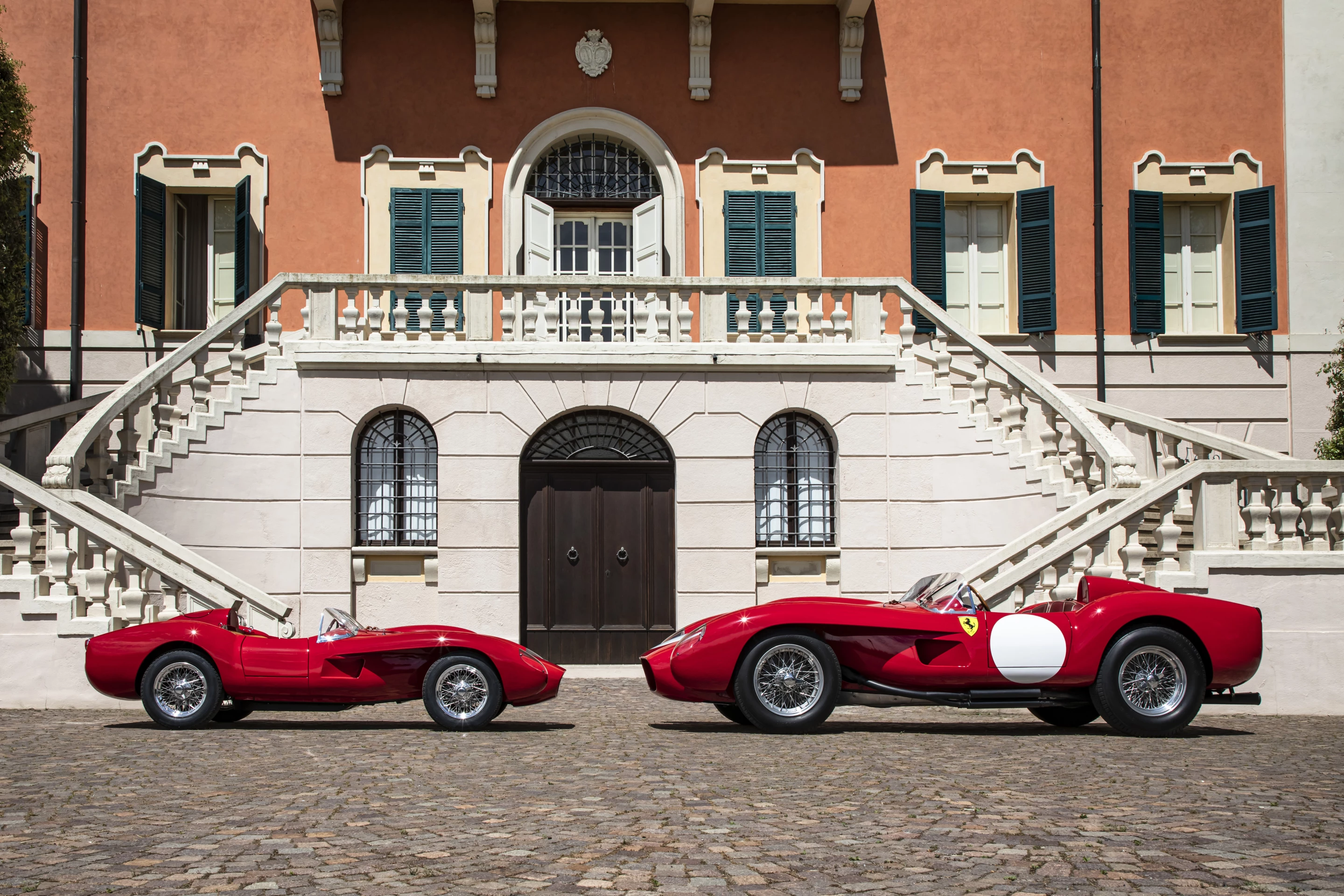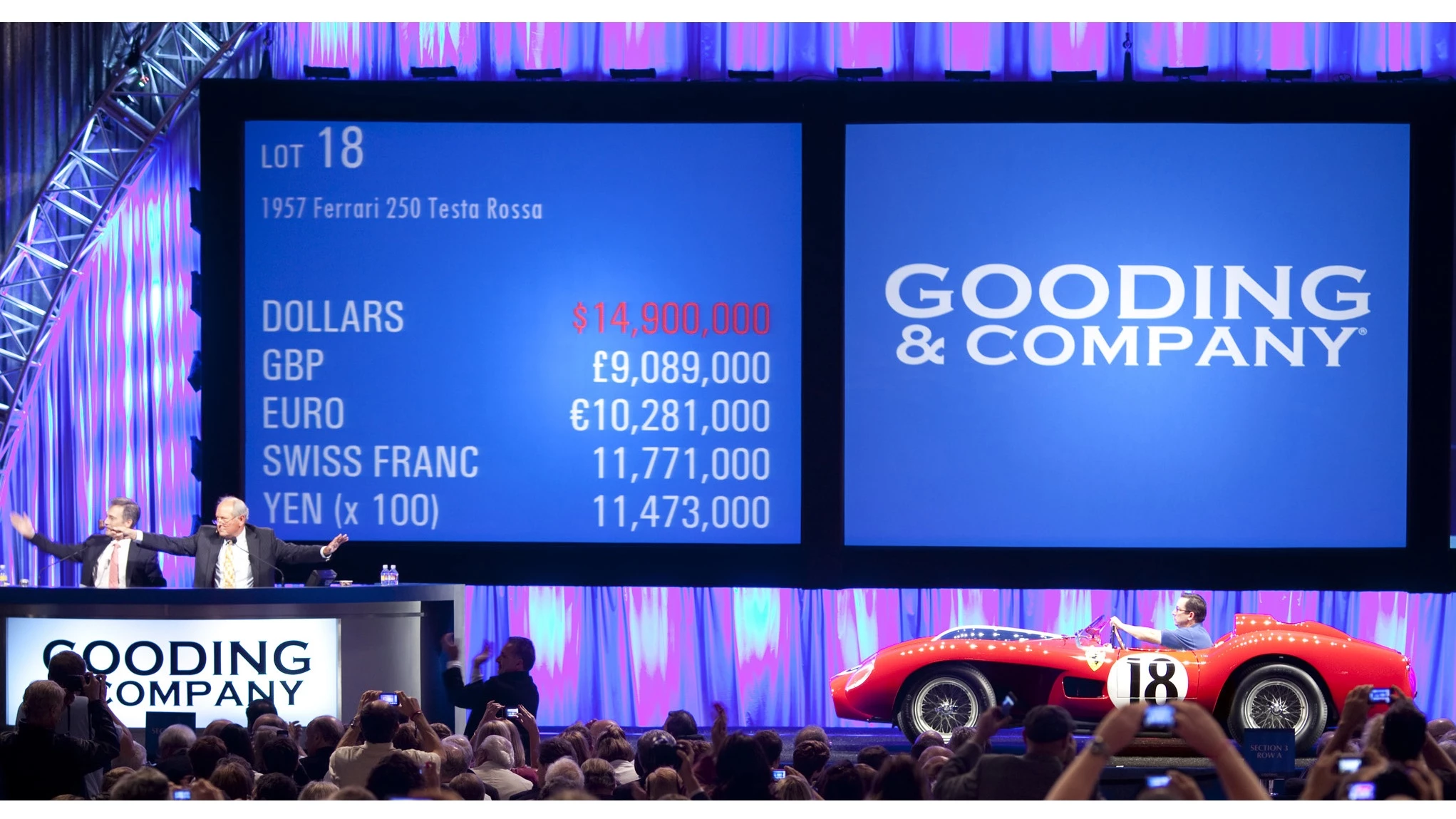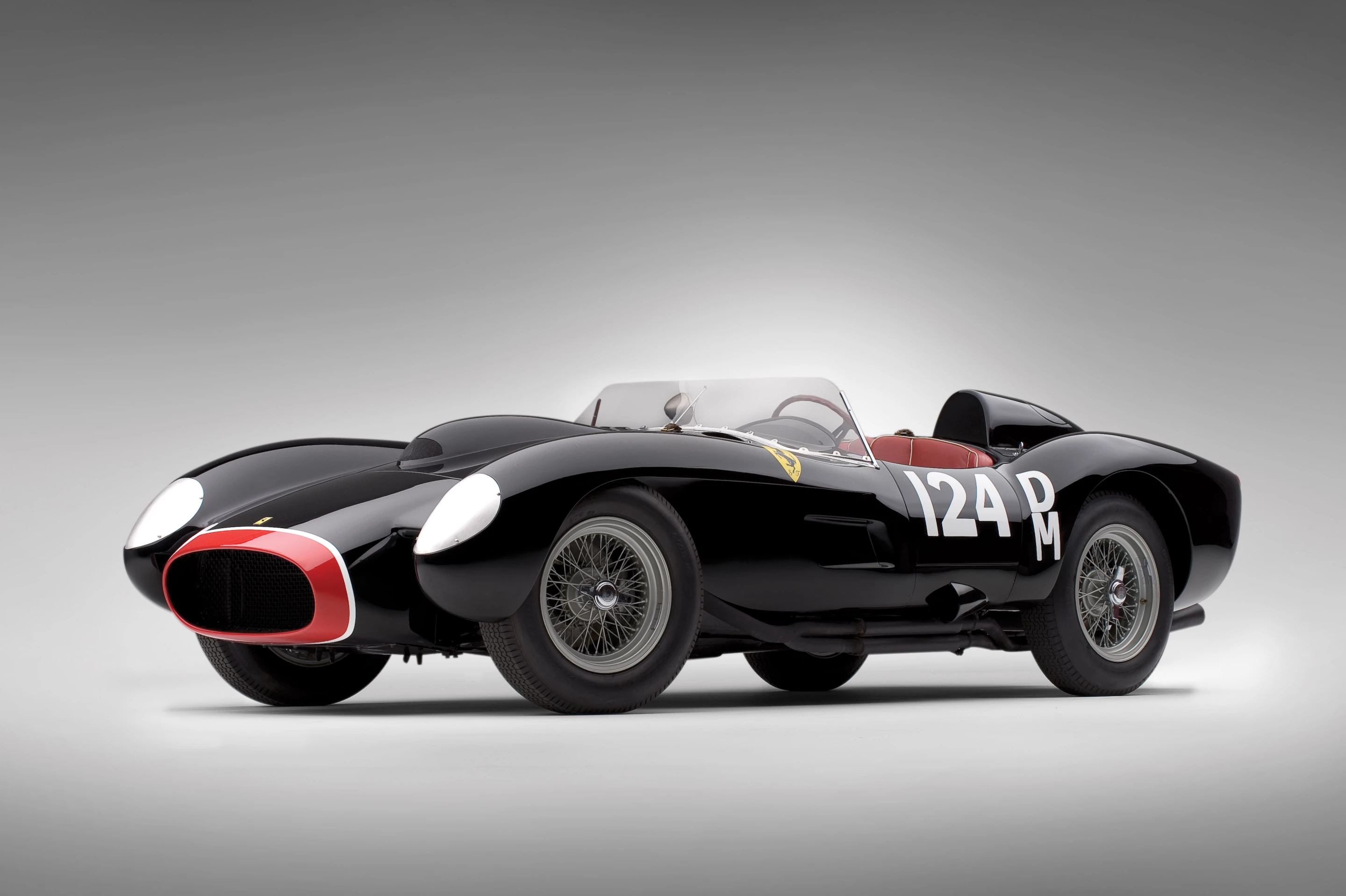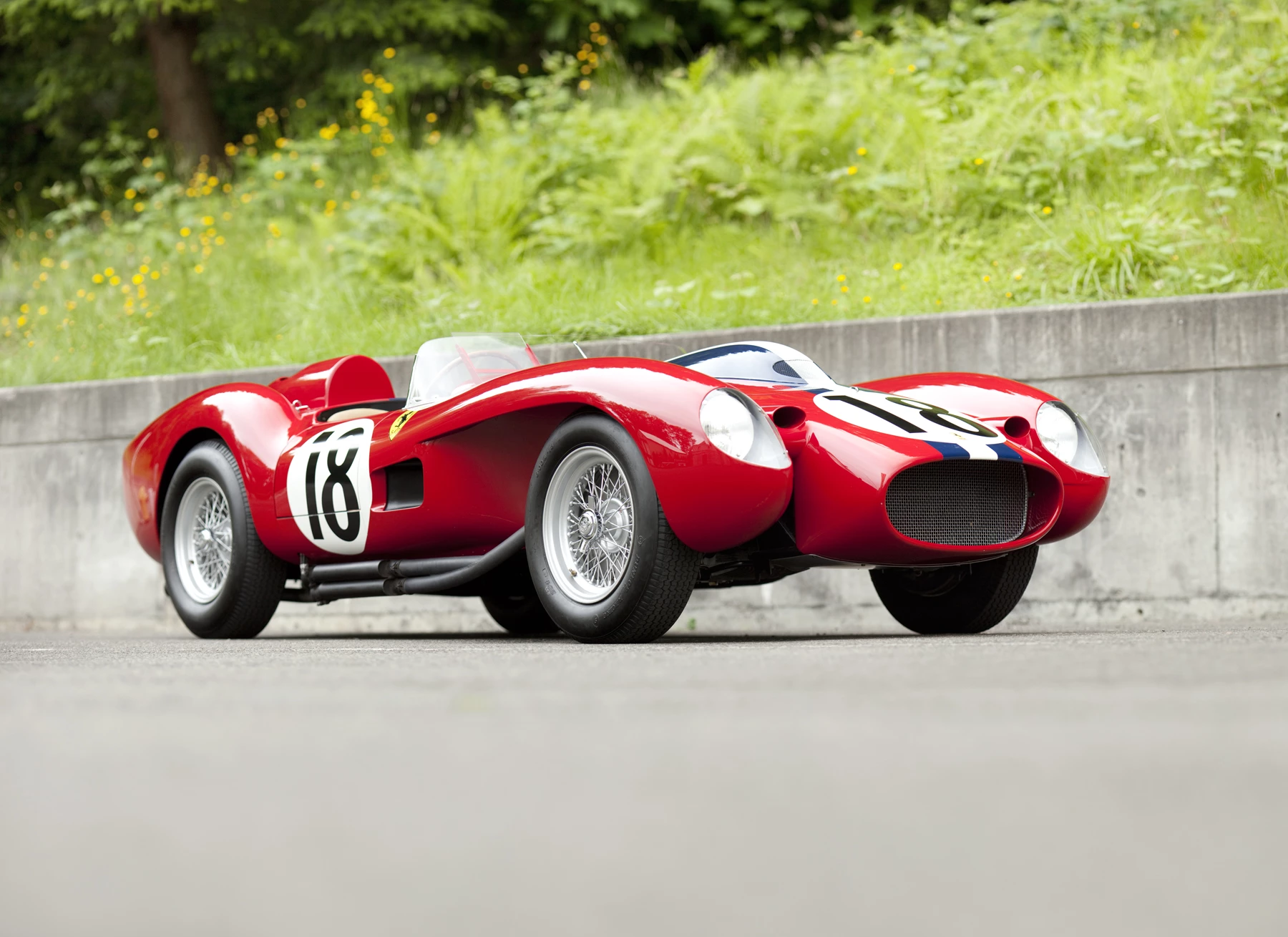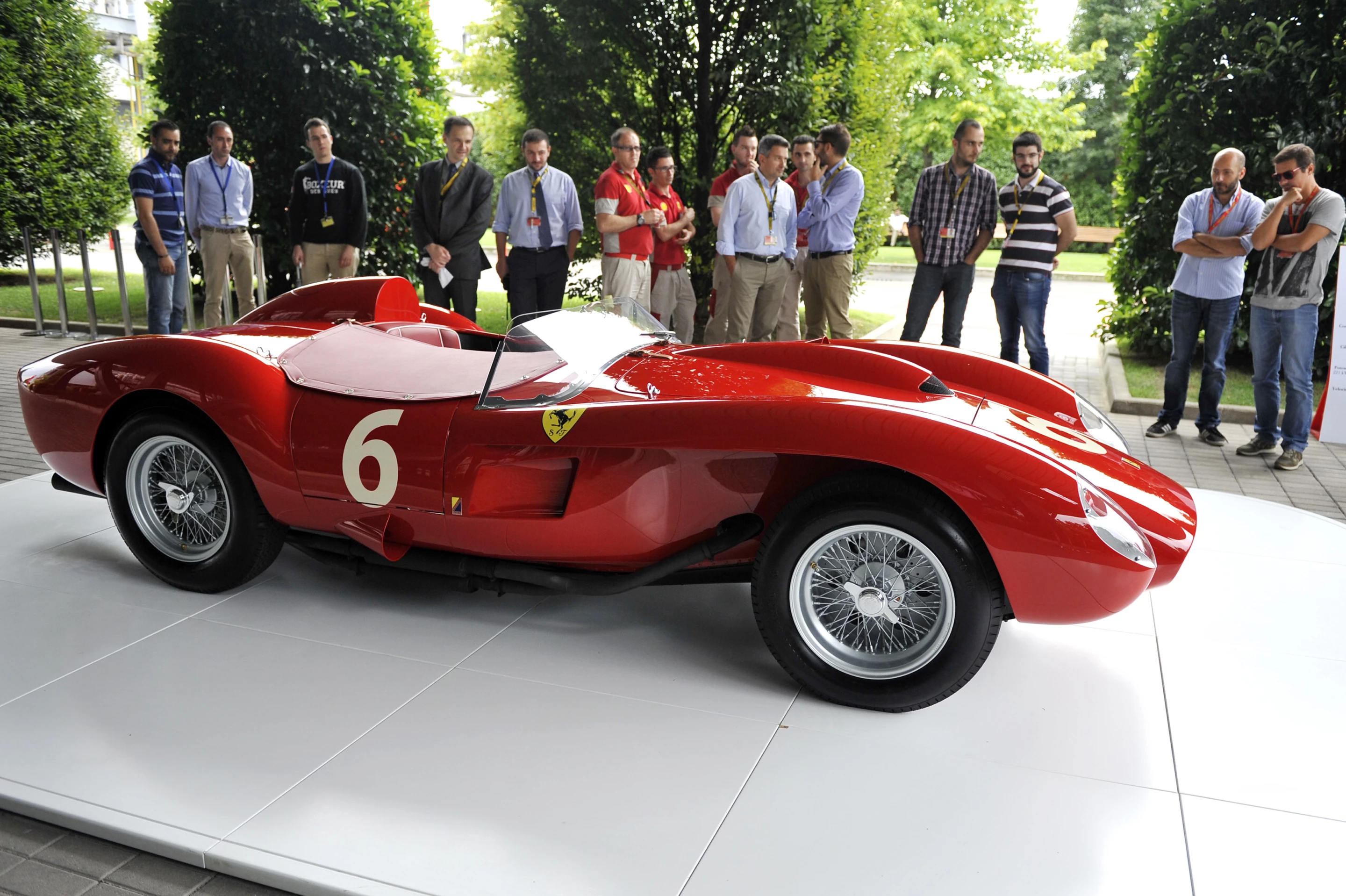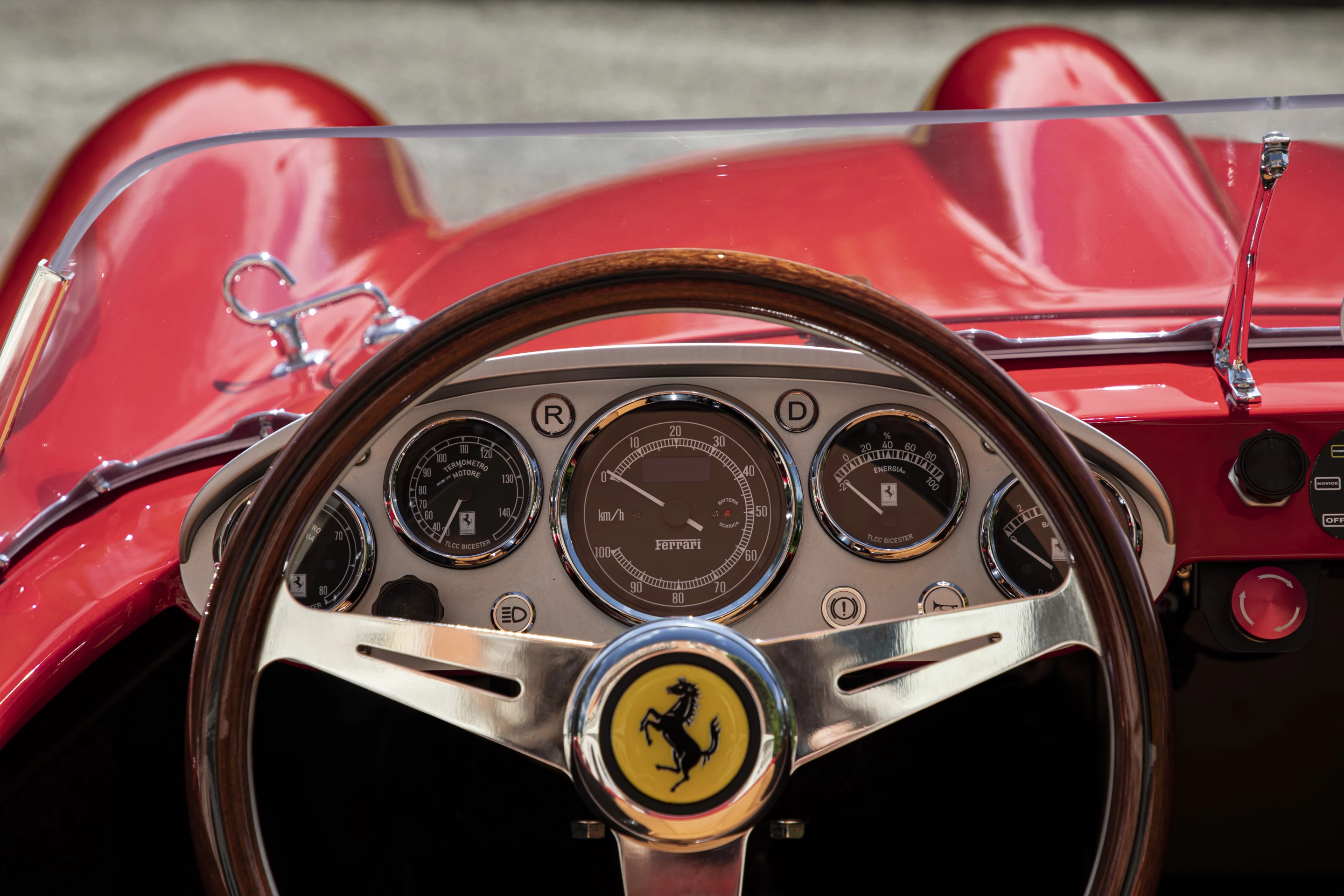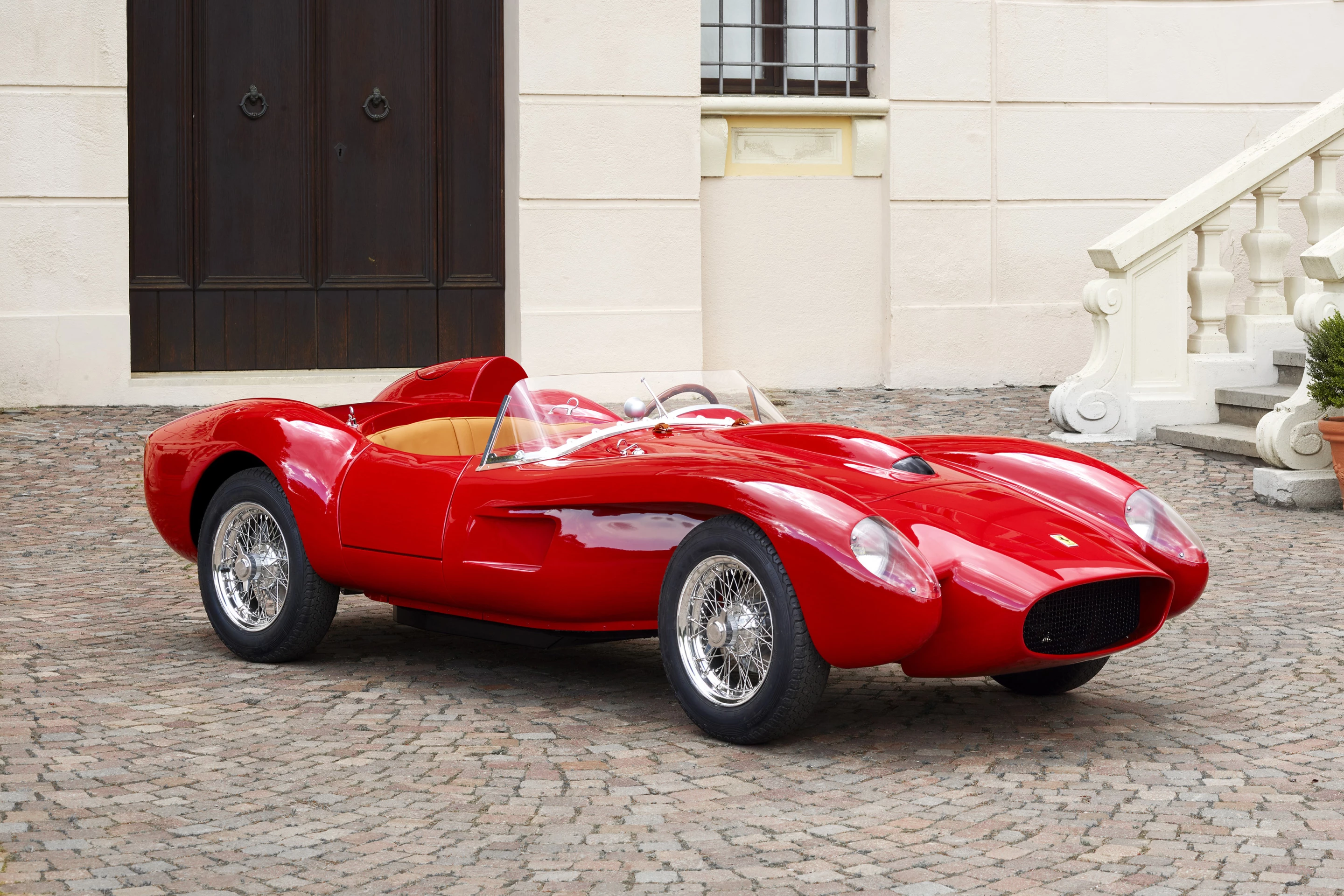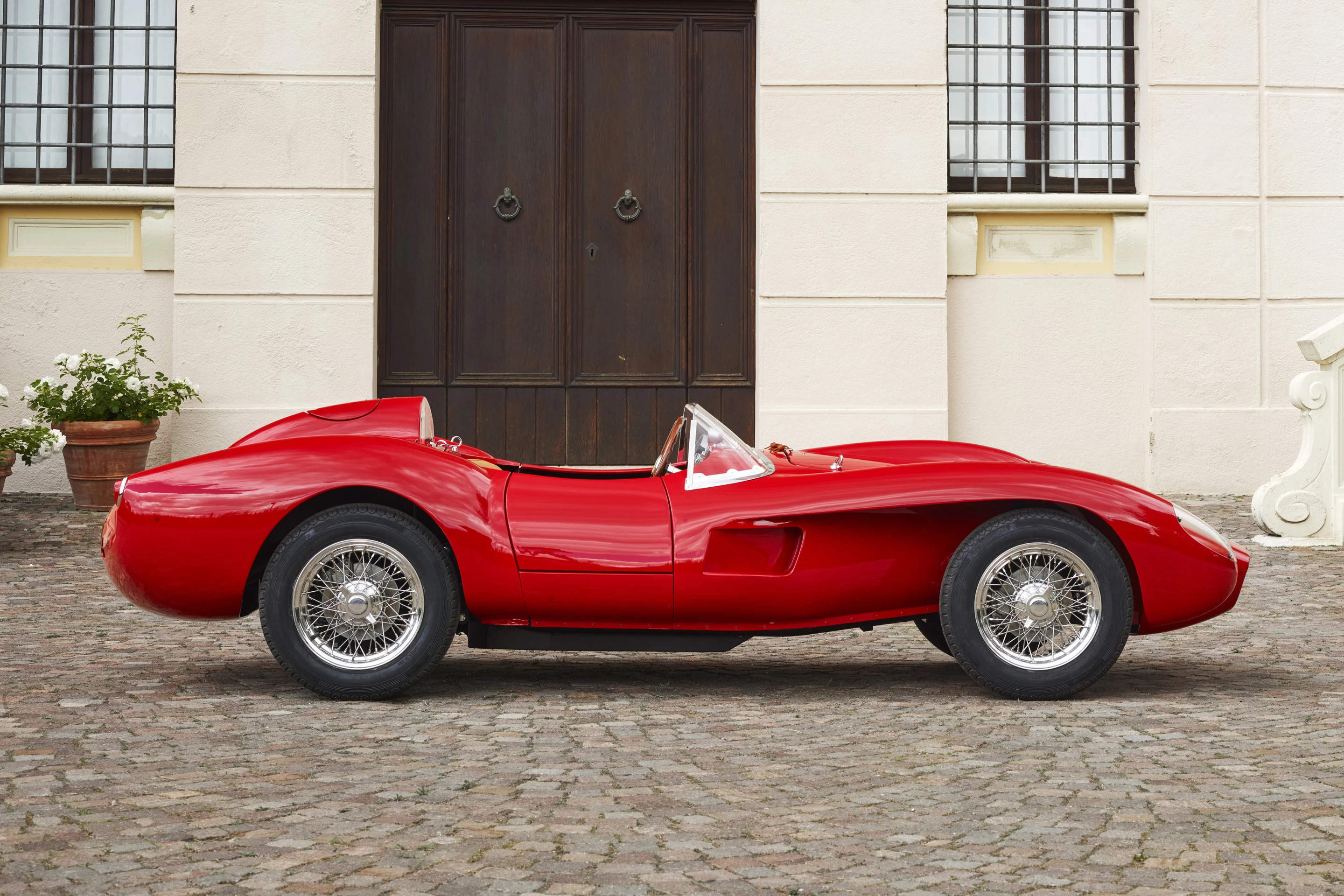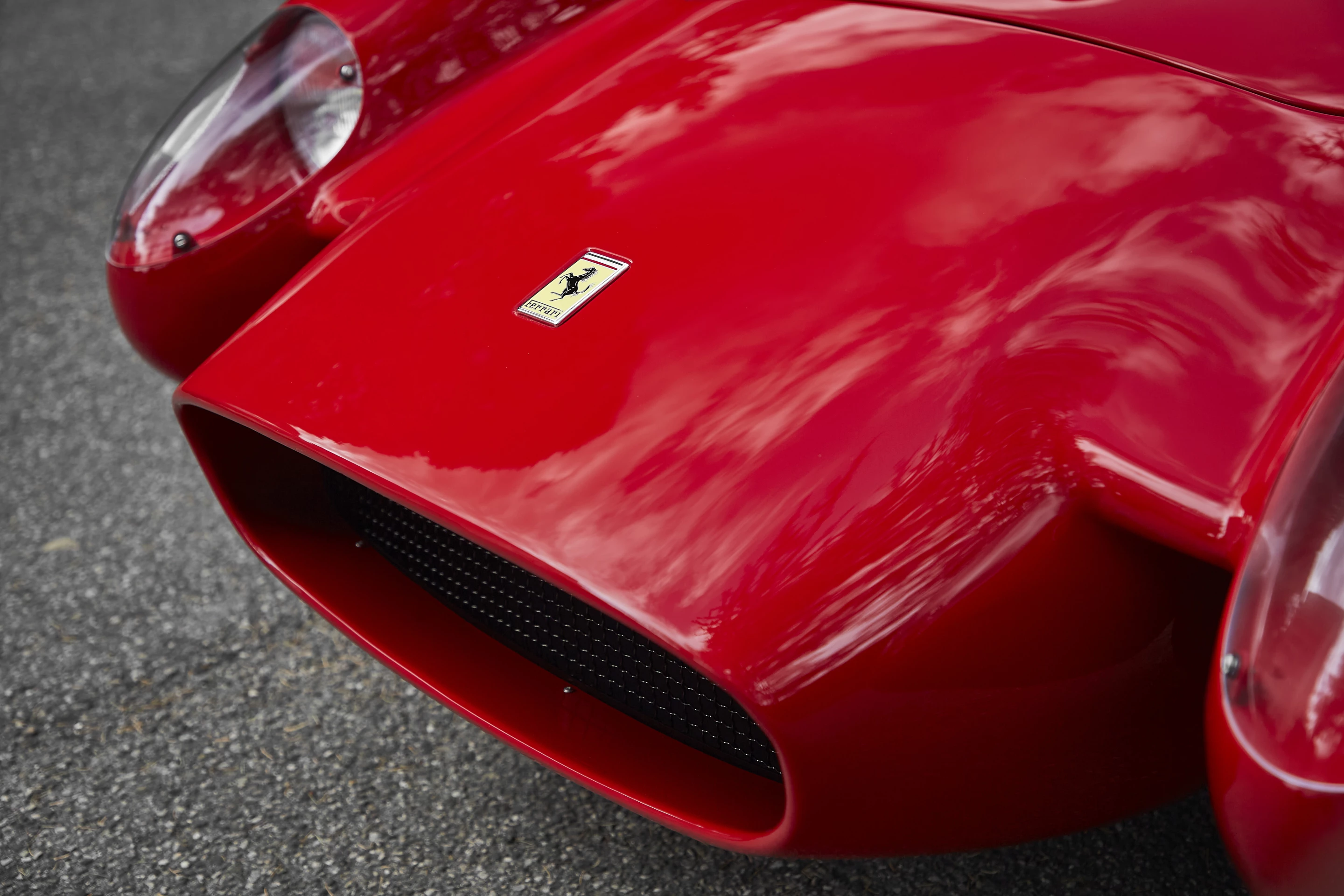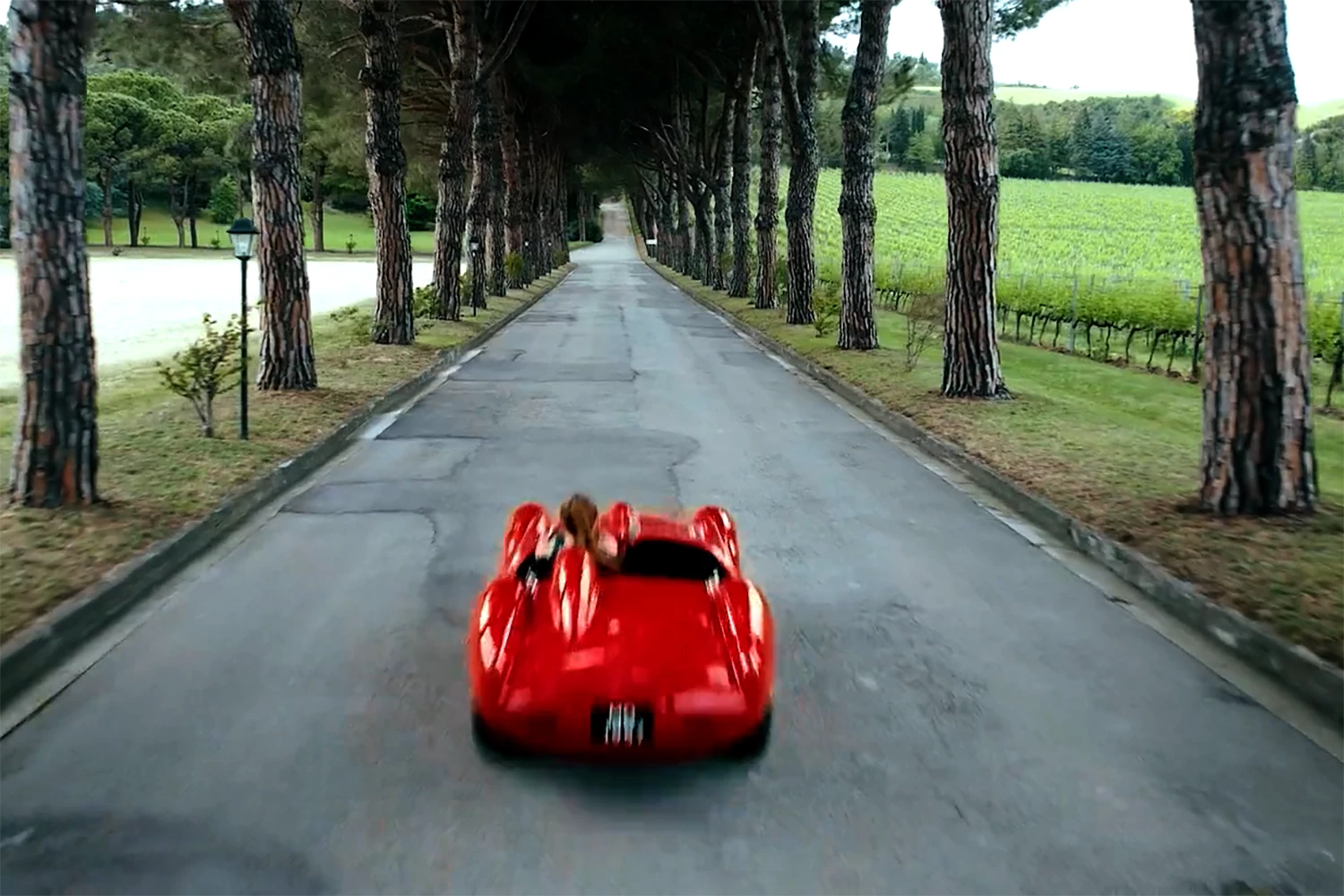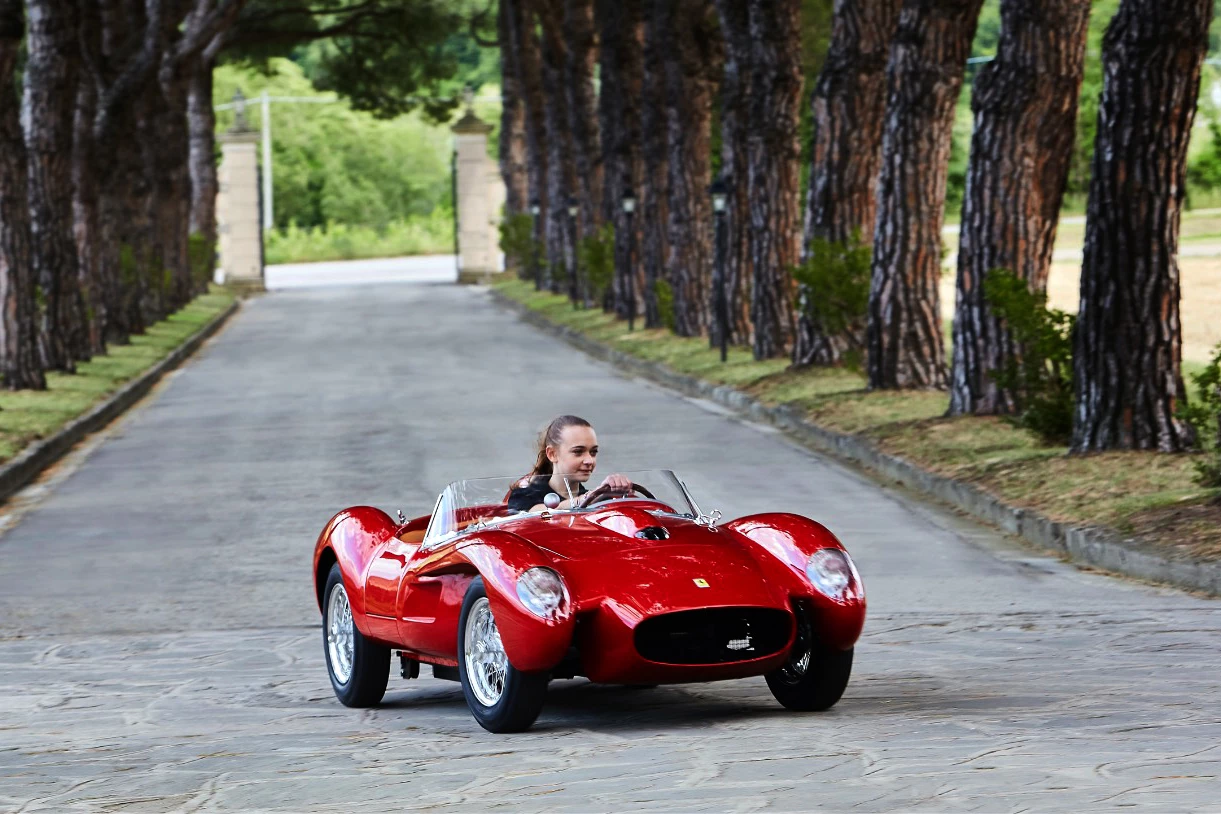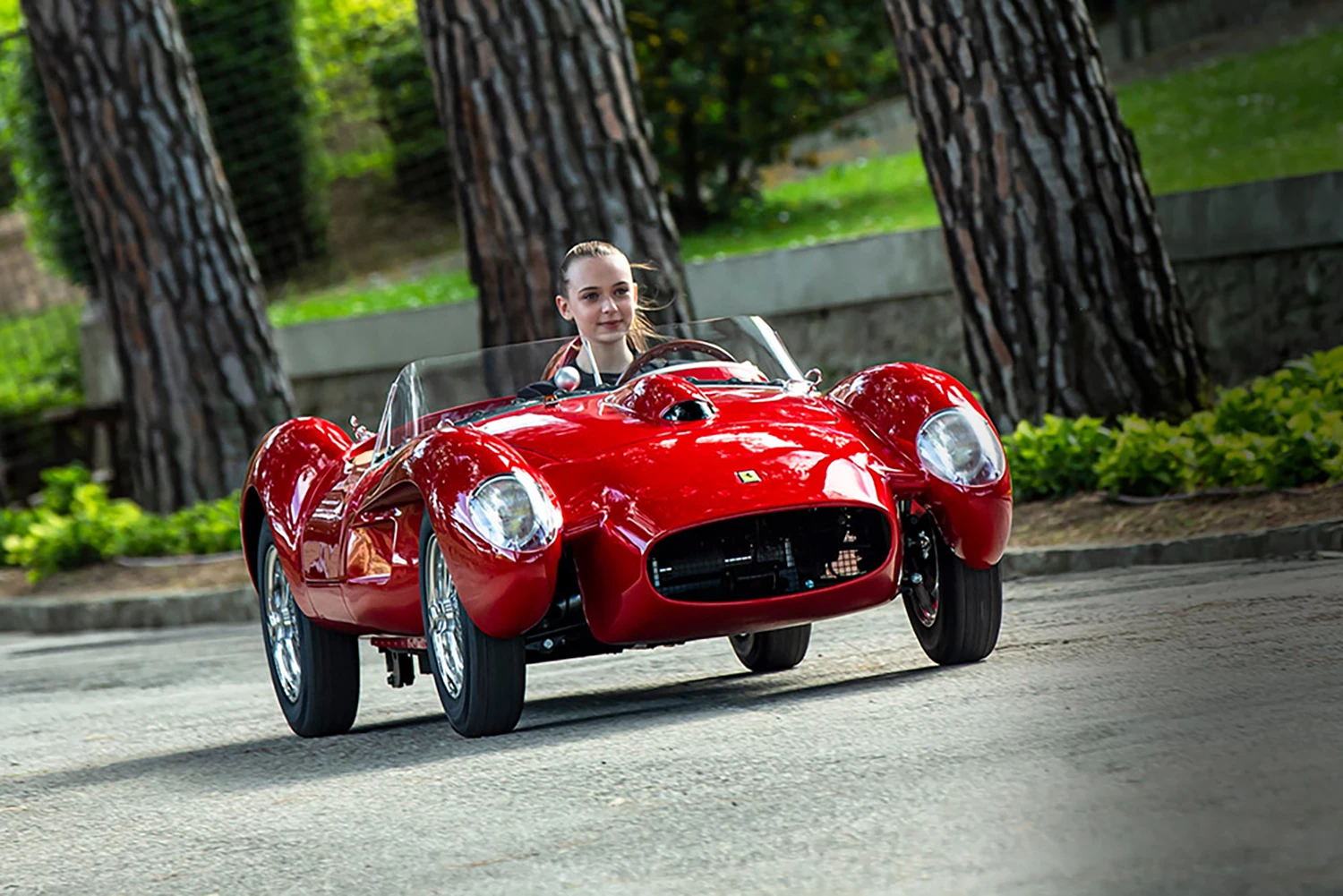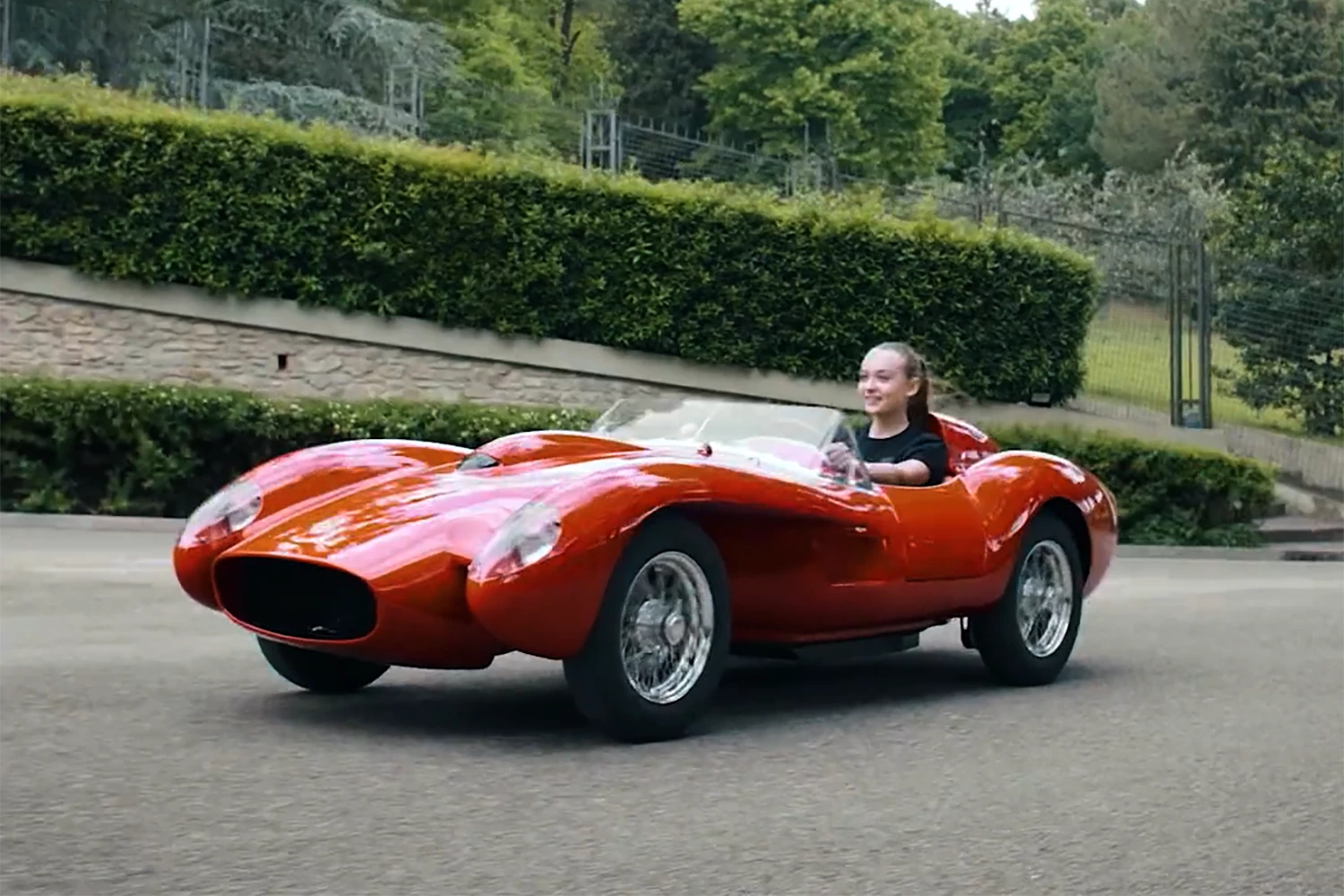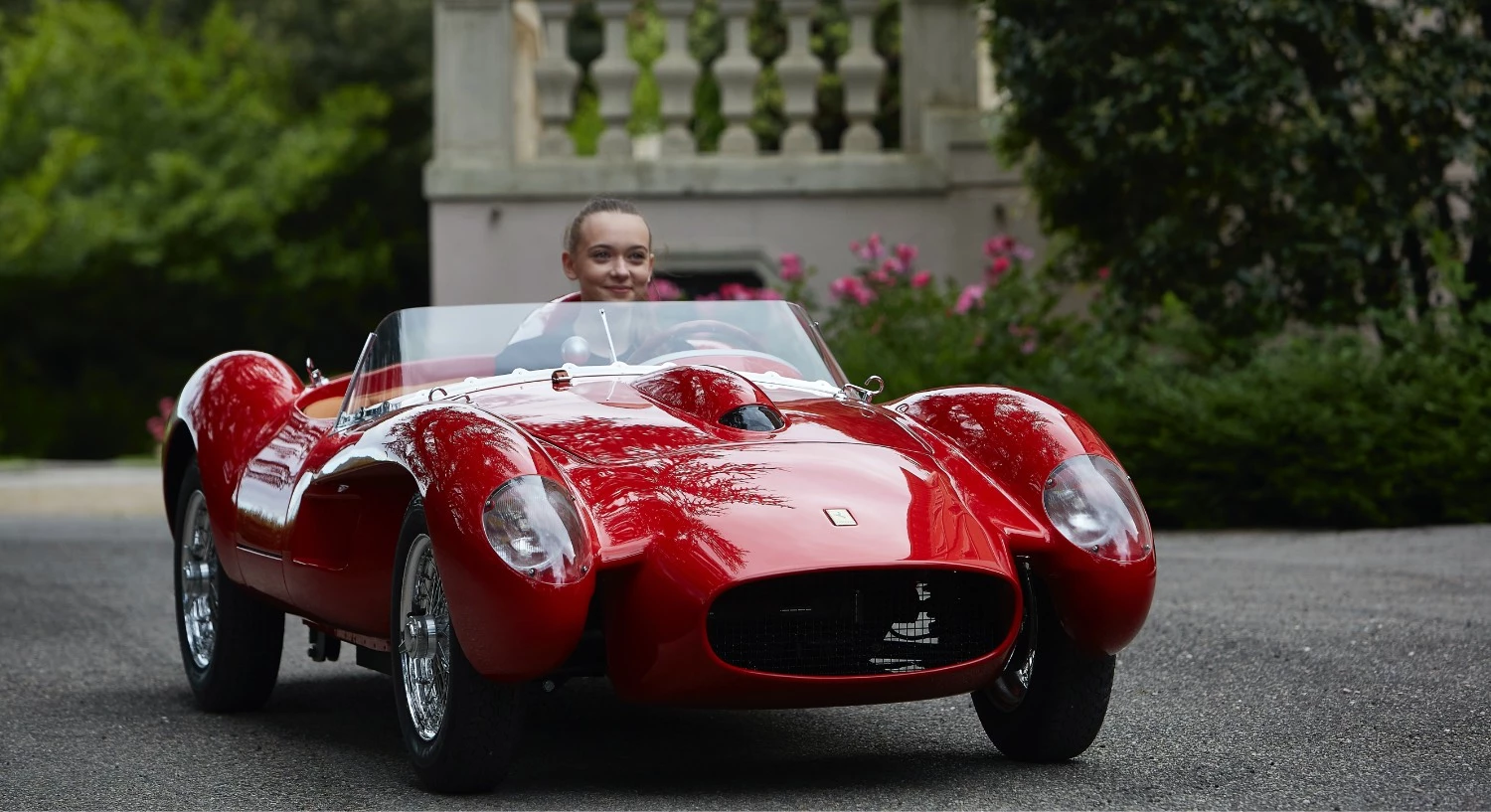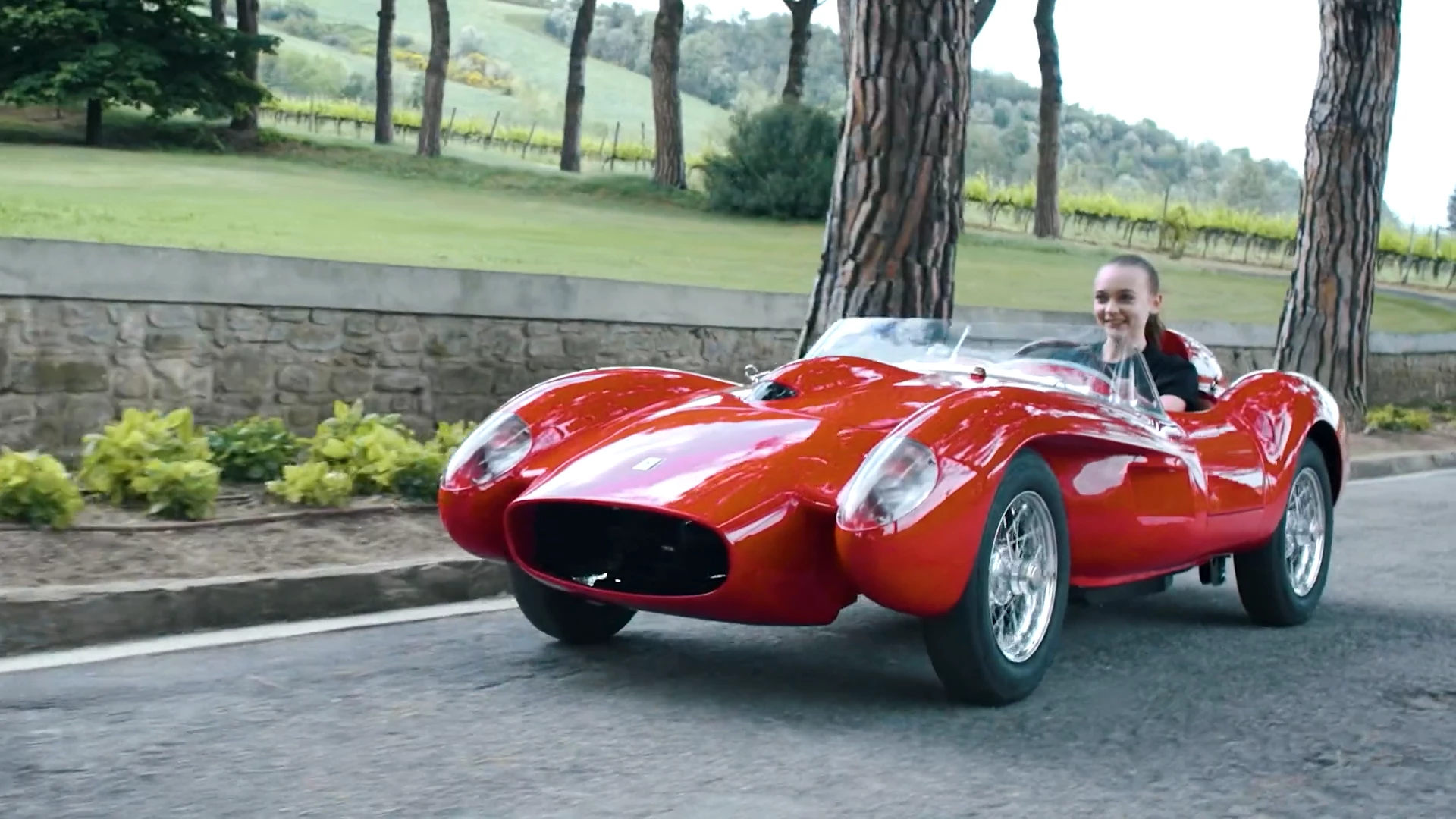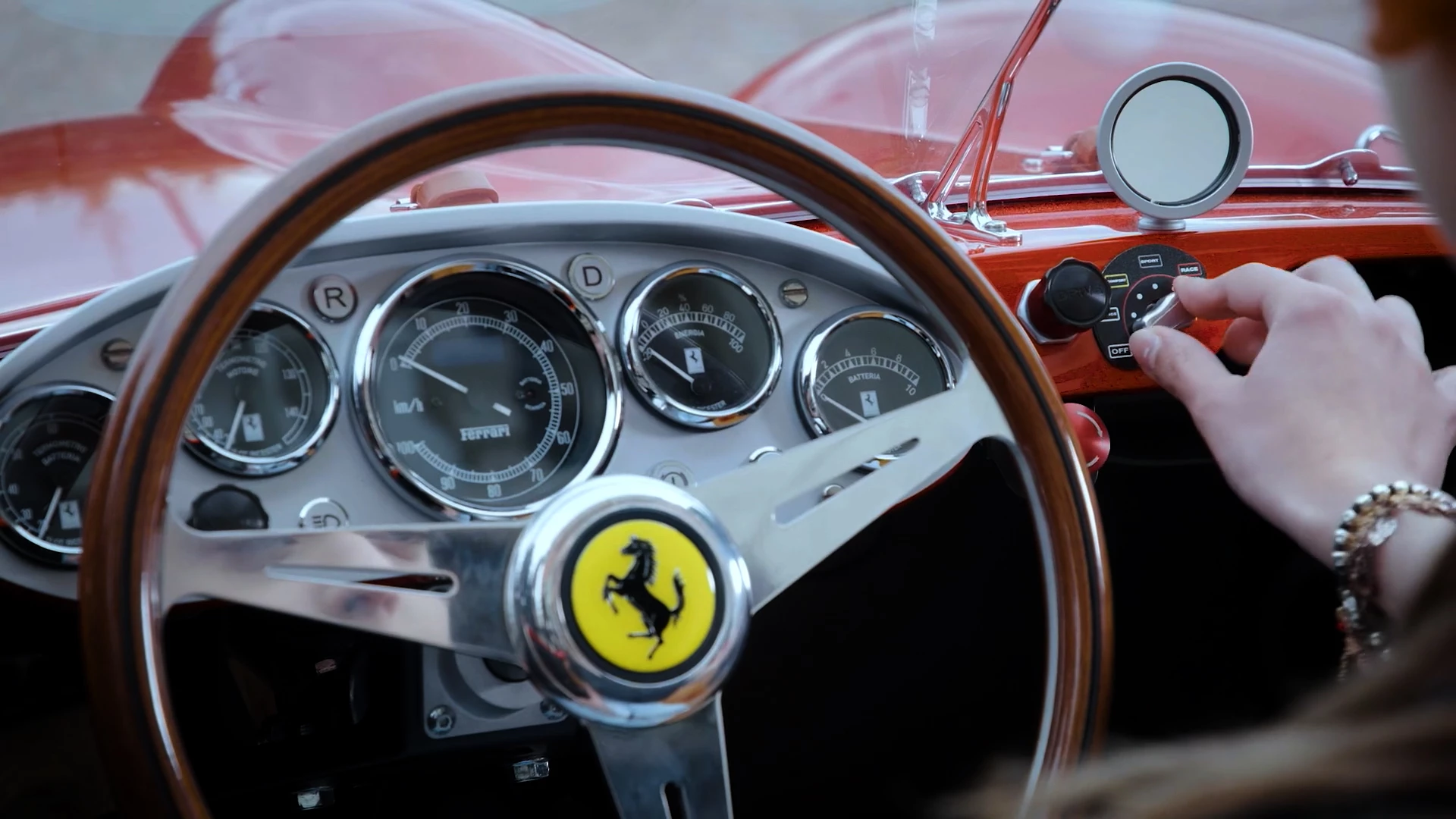Ferrari plans to sell 299 scale replicas of its fabled 1950s Ferrari 250 Testa Rossa supercar at €93,000 (US$109,000) each, all built to Ferrari’s exacting standards with hand-beaten aluminum bodywork, high specification suspension, brakes and wheels, a sophisticated electric drivetrain and steering geometry modeled on the original, giving it the authentic roadholding to match its appearance.
The Ferrari Testa Rossa J meticulously reproduces the lines of the 250 Testa Rossa in the original Scaglietti-designed barchetta version, nicknamed “pontoon fender.” As with all Ferrari road cars, the attention to detail is exquisite. The shark nose and curvaceous bodywork is all hand-beaten aluminum, employing exactly the same process that was used to construct the original historical model that is replicated. The drive train of the replica is entirely electric, and the three batteries provide a driving range of more than 50 miles The batteries can be accessed under the front bonnet and can also be charged where the fuel cap previously resided.
Ferrari’s Testa Rossa J is a 75 percent scale replica of one of the most coveted vintage cars on the planet. Just 34 full-scale Ferrari 250 Testa Rossas were built, they won the 24 Hours of Le Mans three times, making the car not just one of the most beautiful in the world, but far-and-away the fastest road car in the world at the time.

Production of the first cars will commence towards the end of 2021, and clients are now being asked to secure their build slot with a $20,000 deposit, with an as yet unspecified range of options that can be expected to raise the €93,000 (US$109,000) price tag much higher.
Just as with Ferrari's big boys' toys, clients will be able to extensively personalize their car, right down to being able to specify the exact colors of the exterior, interior and trim, and even the color of the stitching in the leather seats. Ferrari Classiche looked at all the liveries that have adorned the real 250 Testa Rossa throughout its racing career and the online car configurator allows clients to choose from 14 historical liveries, 53 bodywork colors and additional personalized racing liveries, all authentically in keeping with Ferrari style. The paint and badges that will be used in building the scale replica are the same as those applied to production Ferrari supercars.

The Ferrari Testa Rossa J is a special project built by Ferrari in collaboration with The Little Car Company, the same company that makes the Bugatti Baby II for Bugatti and the Aston Martin DB5 Junior for Aston Martin. Ferrari’s Styling Centre in Maranello oversaw the proportions and liveries, while the chassis and other components were created using original design drawings held by Ferrari’s Classiche department.
Production of the Ferrari Testa Rossa J will be limited to 299 vehicles, each numbered and with a certificate of authenticity issued in the owner's name. It is highly unlikely that the value of one of these cars will ever drop below the purchase price, as they will immediately become limited edition collector items. Much more can be found on the Ferrari 250 Testa Rossa J deeper into this article, but first let's recap how the world's most prestigious marques have revived Bugatti's marketing ploy of the 1920s to lay the foundations of brand loyalty for the next generation.
Every parent wants the best for their child, and the world's richest people are no different

The prestige car world has always catered to the children of the uber-rich with scale replicas of the most prestigious cars, with Bugatti famously capitalizing on the success of its world-beating Type 35 Grand Prix car by creating a half-scale replica in 1926. The Bugatti Baby became the ultimate status symbol for children in the roaring twenties.

When Ettore Bugatti created an electric car for the fourth birthday of his son Roland on 23 August 1926 and the world's primarily newspaper media ran images of the car, Bugatti received enough enquiries to indicate a vast latent marketplace. A second miniature T35 replica was prepared and exhibited at the 1927 Milan Motor Show, resulting in an avalanche of orders for what became known as the Bugatti Bebe (Baby), and subsequently the Bugatti Type 52, though there is some conjecture amongst purists as to whether Ettore ever recognized the T-52 nomenclature. More than 500 baby EVs were manufactured, and around 100 are still known today, with several having sold at auction for more than US$100,000.

Newspapers across the world ran images of the children of the wealthy with their new Bugatti babys. In recent times there has been a noticeable revival of the elite children's replicar marketplace, as was documented in our recent pictorial coverage of the 2020 Junior Concours of Elegance, at Hampton Court Palace in London and documentation of numerous sales of $100,000 children cars at auction. As of today though, Ferrari has raised the bar much much higher with the announcement of a new limited-edition children's car.

Which brings us back to the Ferrari Testa Rossa J, as the 3/4 scale replica will be known. Most importantly, the tiny jewel comes with four driving modes, which begin with a Novice mode (1 kW power with a top speed of 20 km/h) offering controlled acceleration and the ability to remotely disable the car from a distance with a key fob. Next up the power scale is Comfort mode, which offers 4 kW of power and a 45 km/h top speed. From there, the Sport (8 kW / 60 km/h) and Race (>12kW / 72-76 km/h) modes become progressively sportier and just as Bugatti did more than 90 years ago, races for these cars can be expected once supply has been facilitated.
In the image above you can see the removable key that can set each of the driving modes.
Beyond the selection of driving modes, the Ferrari 250 Testa Rossa J dashboard exhibits a lot of thought on behalf of the designers as the classic dials have been remastered and repurposed for their new role in an electric car, yet retain the original design right down to the same typefaces. The oil and water gauges now monitor the battery and motor temperatures, while the fuel gauge is now the battery gauge and the tachometer has become a speedometer. There is even a power gauge which also shows the level of regenerative braking being deployed.

With safety in mind, the metal side panels are reinforced and an optional roll-bar can be anchored to the chassis. Genuine Brembo disc brakes have replaced the original drum system and there's also a hydraulic handbrake.

